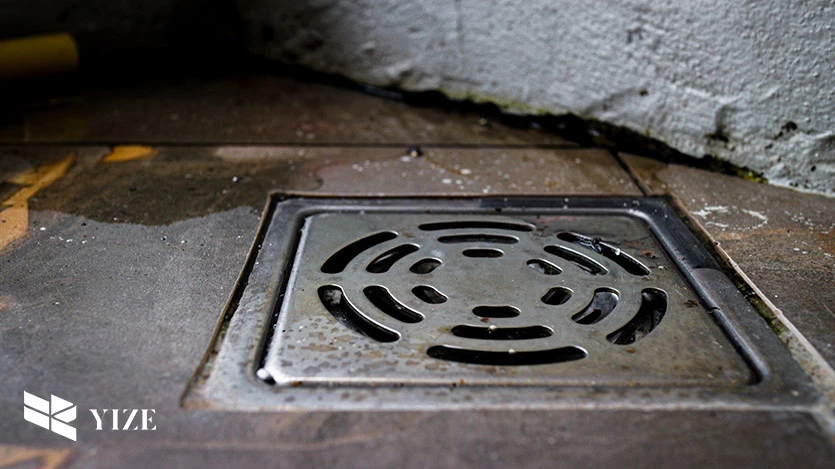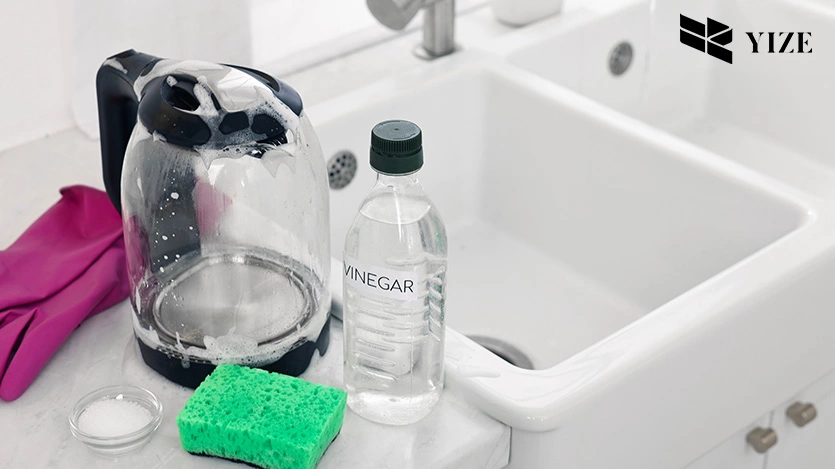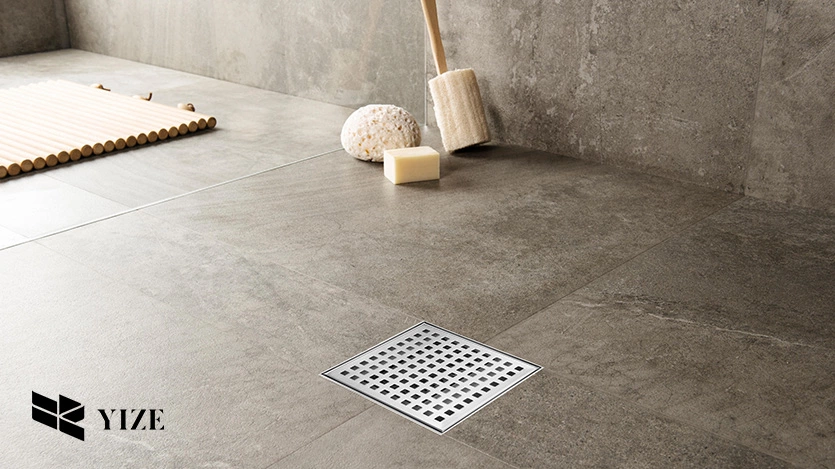
I. Introduction
Limescale buildup is a common problem in bathrooms, especially around shower drains. It can affect both the appearance and functionality of your drain. Limescale is caused by hard water, which contains minerals like calcium and magnesium. When water evaporates, it leaves behind these minerals, which form a chalky, white deposit. Let’s dive into why limescale forms at the top of the shower drain, how to remove it effectively, and the signs of calcium buildup you should watch out for.
II. Why Is Limescale Coming Out at the Top of the Shower Drain?
Hard water deposits cause the formation of limescale at the shower drain line, particularly at the top. Calcium and magnesium are the main cations found in hard water, and these deposit themselves on any surface after evaporation of the water. When water stands on a certain area around the drain, then it is able to deposit these minerals. It may begin as a blind deposit which accumulates over time and appears as a white or off-white color in the drain cover and other nearby regions.
Every home that uses hard water is most likely to find limescale not only near the drain but around the tub, showerhead, and taps. Although limescale does not pose any threat in the beginning, failure to remove it may lead to blocked pipes, ruined plumbing, and lowered water pressure.
III. Part 1: How to Clear Limescale Near the Top of the Drain in the Shower?

When it comes to removing limescale from the top of your shower drain, it is not very complicated. By using simple household products and taking the time to clean it, you can eliminate the accumulation and stop it from happening again.
1. Heat Water In a Pan
First of all, warm some water in a pan to the boiling point. It does not need to be boiling, however it should be hot enough to aid in the dissolving of the minerals of the coffee. Water is effective in breaking up lime, and hence hot water makes it easier to scrub off the limescale. This heat will help soften any blocked substances that may have solidified around the drain.
2. Remove Excess Water from the Drain
Ensure that you wipe off any water that might be stagnant on the parts around the drain before applying any cleaning solution. You can use a sponge, towel or a small container to scoop it out since it is semi-solid. This will make sure that the cleaning solution you apply on the surface will not be washed away by water leaving it to do its work effectively.
3. Put Vinegar and Baking Soda to Use
As soon as the area is dry it is recommended to apply a mixture of vinegar and baking soda. The use of these two together is very effective in dissolving limescale. First of all, pour a little amount of baking soda on the surface of the drain. Subsequently, add vinegar gradually over the baking soda. You will get fizzing, which is a sign that the formula is actively trying to break down the limescale.
The vinegar possesses acidic properties that are effective in dissolving the calcium build up, while the baking soda provides a rough surface to scrub any remaining deposits. Allow the mixture to stand for about fifteen to twenty minutes to allow it to set well, infiltrate the limescale.
4. Cover the Mixture with a Rag
To further enhance the efficiency of the vinegar and baking soda paste, put a rag on the affected region. This helps avoid evaporation of the solution quickly which then lets it work longer on the hard stains. It is also recommended to add a little more vinegar to the rag so as to keep it wet and alive throughout the process.
5. Wash Away Using Boiling Water
Next, take the rag out and rinse the area with hot or boiling water after some time has elapsed. The hot water will assist in the removal of the limescale hence making the drain free from any blockage. If you’re left with any residue, you may wish to brush away the residue using an old toothbrush or a non-bristle sponge.
If it is necessary to remove thicker layers of limescale, this procedure might be repeated; however, as practice has shown, it is sufficient for the removal of deposits in the upper part of the drain.
IV. Part 2: Signs of Calcium Buildup in Your Drain
The first sign of calcium deposition around the shower drain is a clear indicator that you require the services of a professional. These signs if detected early can help avoid serious issues such as blockages, damages on your pipes.
1. Blocked Drainage Pipes
Calcium deposit is easily identified if the drain has a poor drainage rate or if it has been completely blocked. As limescale builds up inside the pipes, it narrows the passage through which water flows, and it then takes longer for the water to drain. This gradually accumulates and forms a thick layer that may even clog the drain at some point. In some cases, you may realize that your shower has started to develop slow drainage and this may be attributed to limescale.
2. Limescale on Drain Covers
You can tell that limescale build-up is rife if you notice a white or yellowish deposit on your drain cover. The minerals are precipitated on the walls of the pipe as the hard water dries and these manifest around the drain. Though it may not appear to be significant at first, this accumulation will worsen over time if not addressed.
3. Dark Spots on Your Bathroom Fixtures
Limescale is not just confined to shower drains; it leaves stains behind on other bathroom accessories such as taps, shower heads, and tiles. They usually appear white or cloudy and can easily be distinguished from other areas because they cannot be cleaned using normal detergents. It is advisable to start cleaning your fixtures as soon as you realize they are starting to gather spots, this may be due to the mineral deposits in your water and may have an impact on the functioning of your plumbing system.
V. Quick Tips to Prevent Limescale Buildup

To keep your shower drain free from limescale, follow these quick and simple tips:
●Wipe Down Surfaces: Following each bath, clean the area around the drain with special focus on any water that has accumulated there. This helps to avoid formation of deposits that are usually made of minerals.
●Install a Water Softener: A water softener can help decrease the concentration of calcium and magnesium in your water and thus prevent limescale formation.
●Use Vinegar Regularly: Pour vinegar down your drain once a week in order to soften any signs of limescale formation and ensure a clean drain.
●Clean Fixtures Monthly: Daily maintenance and weekly cleaning of shower drains and other bathroom fixtures can prevent limescale from being a major problem.
VI. Conclusion
The formation of limescale around the drain in the shower is a common problem in houses fitted with hard water. While it is a physical process that results from mineral formation, it may lead to more serious issues including blockage of drainages and poor water flow if not managed properly. The good news is that, using products found in every home such as vinegar and baking soda, it is possible to effectively remove limescale and prevent its formation in the future.
Thus, by heating water, applying a mixture of vinegar and baking soda, and then using hot water for rinsing the drain, one can keep his shower space clean and drain the water efficiently. It is recommended to regularly check for limescale buildup; signs include blocked drains and stains on fixtures, to avoid buildup in the future of this shower.
Frequently Asked Questions (FAQs)
1. What causes limescale buildup in the shower drain?
water is one that contains high amounts of calcium and magnesium, and when allowed to evaporate, it causes limescale buildup. If the water fully evaporates, the minerals in it form a white or chalky substance, called limescale.
2. How often should I clean limescale from my shower drain?
Recommended clean up frequency for a shower drain should be monthly to avoid the build up of large deposits of limescale. But if the water supply in your residential area is hard, then it will be necessary to clean the machine more often.
3. Can limescale damage my plumbing system?
Yes, limescale can build up inside pipes if it isn’t removed from the water, and this can cause the pipes to narrow and block, thus reducing the flow of water. In the long run, the expense of maintaining your plumbing system will be affected since there will be damages that require repair work.
